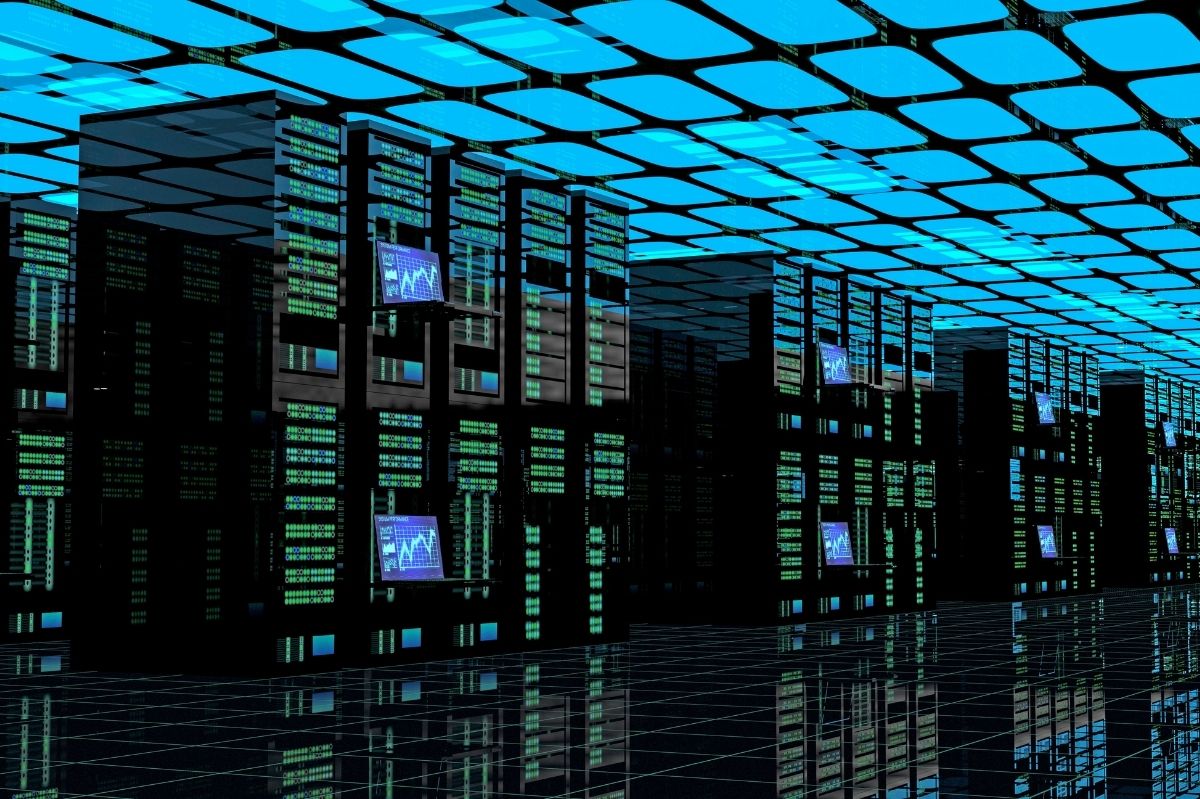Data Center Security, The security and efficiency of Data Centers are crucial for all companies in the digital age. Telephony, cloud, storage, colocation, hosting, videoconferencing: the services we use every day at work (and not only) are provided through the Data Center.
These “invisible” technological infrastructures guarantee the functioning of any system 24 hours a day, guaranteeing companies access to their most precious asset: data.
Table of Contents
A sector in transformation
The offer of Data Centers in Italy has grown a lot in recent years, driven by the change that economic processes, increasingly digital-based, impose on companies. Until a few years ago, for some companies, it was enough to host a few servers (or even external hard drives) in a small room between the offices and equipped with a UPS.
With the digital development of business processes, data needs more space (Storage), servers consume more energy, and security requirements are increasingly higher.
For this reason, according to Gartner analysts, by 2025, 85% of companies will abandon their old internal data centers to rely on a mix of on-premise, colocation, and cloud services.
From this point of view, the technological infrastructure made available by the ICT service provider becomes strategic.
Choose the most reliable data center.
When a company chooses its supplier, it should always ask itself what type of Data Center will be used to provide the services, keep the servers in colocation and protect its data, also in view of the provisions of the GDPR and the regulations on privacy.
Choosing the right structure is not always easy, and the stakes are very high since an interruption of network services, and lack of access to data would cause a business blockage.
The list of requirements that make a Data Center safe is very long but to summarize, we can identify 5 characteristics that are truly indispensable for safety.
Structural requirements for data center security
The choice of a Data Center must start from the location of the host site.
The structure must be located in areas with low seismicity and be built with anti-flooding and anti-seismic criteria capable of withstanding floods and earthquakes.
Elements such as the perimeter protection of the building (made with video surveillance and alarm systems) and the security procedures for access management must also be considered.
These should only be allowed to authorized personnel via customized control systems such as badges and biometric data readers.
The racks that house the servers must, in turn, be protected with locks that allow opening only to authorized personnel.
Continuity of work thanks to redundancy
Redundancy is essential in the creation of a secure Data Center in order to guarantee service continuity or the so-called business continuity.
This means that more elements must be present in the structure (generally double those necessary) capable of performing the same function in order to increase its reliability.
Local redundancy, for example, provides for duplication of all the devices that keep the Data Center active, such as the UPS, the generating sets, and the air conditioning system, as well as the network equipment and servers.
This reduces the risks associated with the failure of a single element.
More structured operators can deliver their services through multiple data centers linked together. This allows you to create geographical redundancy, that is, the replication of a Data Center on another infrastructure that is a clone of the first and is located in a different territorial area.
This allows for the implementation of Disaster Recovery plans and guarantees the continuity of services to its customers even in the event of a failure of an entire Data Center.
To create a geographically redundant network, the redundancy of the connection circuits that serve the Data Center, such as, for example, those that guarantee the output of data traffic to the Internet, typical interconnections to global Carriers or to the Internet eXchange Points (IXP ).
The redundancy of the systems and equipment must, however, be achieved, from the point of view of the network, through the use of dynamic routing protocols capable of “noticing” any failure and moving data traffic between the infrastructures very quickly without human intervention. In this way, the risks of service interruption are minimized.
Fire risk management in Data Centers
Inside the Data Centers are kept electrical equipment and electronic devices. Therefore, in the event of a fire, it is necessary to have a system capable of not damaging the equipment mentioned above.
Typically, Data Centers are equipped with nitrogen sensors and fire extinguishing systems.
The most advanced data centers use oxygen-depleting fire extinguishing systems. Thanks to the continuous reduction of this gas below the minimum levels for combustion, these systems allow the prevention of fires by preventing the ignition of the flame.
Physical security in Data Centers has also been protected thanks to the division of environments between data rooms and power supply rooms since the latter type of equipment is more subject to the development of sparks or flames.
Power supply and continuity of energy supply
The power supply is also essential for the continuity of the work of the Data Center.
Servers, switches, routers, and telecommunication equipment require adequate electrical systems to guarantee multiple and independent power supplies with separate and diversified paths.
In the event of an emergency, the continuity of energy must be ensured by redundant UPS and autonomous systems for the generation of energy, such as generators.
Each UPS is typically located in separate rooms and with independent cooling units, while the power supply of the individual cabinets that house the technological equipment is redundant on a double line.
Air conditioning: less consumption and more efficiency
Correct management of air conditioning not only serves the safety of the Data Centers but also allows for the reduction of consumption and obtaining maximum efficiency from the equipment present on the site.
For this purpose, the arrangement of separate hot and cold aisles and the adoption of air conditioning systems with double power supply circuits keep the temperature and humidity within pre-established standards.
The most advanced air conditioning models are powered without interruption in continuous cooling mode, even in the event of an intervention by the emergency generators.
All these elements combine to determine the guaranteed uptime of a Data Center and transform it into a truly safe place for data.
Visit a Data Center to choose better
An important tip for companies that have particular security needs or want to choose colocation services is to visit the operator’s Data Center in person.
A live visit allows you to have an immediate perception of the quality of the infrastructures and the supplier’s attention into his work.
In this way, it will be possible to have a precise idea of the internal protocols and regulations that limit access to the premises and to have a direct view of all the systems installed and the quality of the cabinets in which the equipment that the Customer decides to move will be positioned in the Data Center.
Also Read : Impact Of Artificial Intelligence On The Robotics Industry







